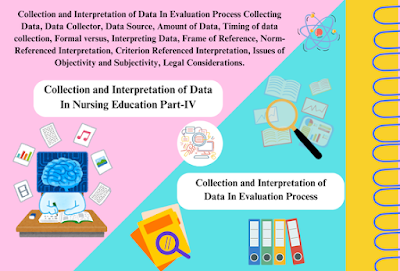Data Gathering and Its Significance in the Evaluation Process
The next phase in the evaluation methodology involves the employment of an assessment tool to collect relevant data. While the instrument itself dictates the data type and collection technique, numerous supplementary elements warrant contemplation. These include the identity of the data collector, the sources from which data is drawn, the quantum of data required, the timing of the collection, and whether the process will be formal or informal.
Data Collector
One must give meticulous consideration to the individuals responsible for data collection. For instance, it could be a faculty member assessing a student’s clinical abilities. Alternatively, students or research assistants may oversee the administration of instruments. Should those responsible for data collection be inexperienced, they must receive proper orientation. Ensuring interpreter reliability is pivotal when multiple individuals are engaged in gathering data.
Data Source
Before the evaluation ensues, the evaluator needs to ascertain the data sources. Will the data be observational (as in clinical evaluations), archival (such as accessing student records for GPA), or self-reported (for instance, through longitudinal surveys of graduates)? At this stage, it is essential to confirm whether access to necessary records is viable, particularly if participant consent is required.
Amount of Data
The scope of data to be amassed must be determined and delineated. Comprehensive data collection may not always be necessary; a representative sample might suffice. For example, in clinical evaluations or academic assessments, it is impractical to record every instance of clinical performance or classroom learning. In such cases, a well-structured sampling procedure, informed by clinical evaluation protocols or test blueprints, is employed. It is critical to establish this sampling plan during the evaluation’s preparatory phase.
Timing of Data Collection
Determining the optimal time to collect data requires a deep understanding of the evaluation context. Should data be gathered at the beginning, middle, or conclusion of the evaluated activity? When collecting data from students, it is vital to ensure ample time is provided, and the collection should occur when students can offer impartial responses. For instance, course evaluations conducted immediately following test results may not yield reflective feedback.
Formal versus Informal Data Collection
A decision must be made regarding whether formal, informal, or both methods of data collection will be utilized. Formal data collection might involve structured evaluation tools, whereas informal collection could entail spontaneous student comments. Evaluators need to decide the most suitable method based on the objectives of the evaluation process.
Data Interpretation
Interpreting data involves translating raw information into answers to the evaluation questions set at the outset of the process. This phase includes converting data into usable formats, organizing it for analysis, and interpreting it against predefined criteria. Several factors, including the context of the data, the frame of reference, objectivity, and any legal and ethical implications, must be taken into account.
Frame of Reference
The frame of reference pertains to the perspective from which data is interpreted. Two primary reference frames include norm-referenced and criterion-referenced interpretations.
Norm-Referenced Interpretation
Norm-referenced interpretation evaluates data in relation to the performance norms of a peer group. Here, individual performance is gauged by comparing it against others in the group. In such evaluations, there will always be a spectrum, with some individuals excelling while others fall behind. Norm-referenced interpretation is valuable for making comparative evaluations, such as ranking students within a class or comparing them against broader standards, like national licensing exams or specialty certifications in nursing. Its benefit lies in the ability to compare individuals and use this data predictively, for instance, in admission decisions. However, a potential downside is that it may cultivate competitiveness among students.
Criterion-Referenced Interpretation
Conversely, criterion-referenced interpretation evaluates outcomes based on pre-established standards or criteria. This method is common in competency-based learning models, where the goal is for students to meet or surpass specific learning objectives. Since students are compared against criteria rather than each other, it allows all participants the opportunity to demonstrate competence. This approach fosters motivation, collaboration, and clearer progress tracking. Nonetheless, its limitation lies in the inability to compare students with one another or with other groups.
Objectivity and Subjectivity
The challenge of balancing objectivity and subjectivity always arises during data interpretation. Different evaluators might draw varying conclusions from the same data, often due to biases or degrees of objectivity. For example, performance appraisals may be influenced by recent favorable or unfavorable events, a phenomenon noted in workplace performance studies (Polit & Beck, 2013). While a degree of subjectivity is inevitable in evaluation, it is essential for educators to recognize its presence and understand how it might influence their findings.
Legal Considerations
Legal issues, particularly concerning student rights, must also be contemplated during the data interpretation phase. Key questions include: How will evaluation results be shared? What type of student data can be collected? Does the evaluation process comply with ethical standards concerning human subjects? Moreover, the implications of evaluation results must be considered—who will be impacted, and how will they respond? These factors underscore the importance of adhering to legal protocols and ensuring transparency in the evaluation process. The evaluator must remain cognizant of these elements to ensure that due process is respected throughout the evaluation and reporting stages.
